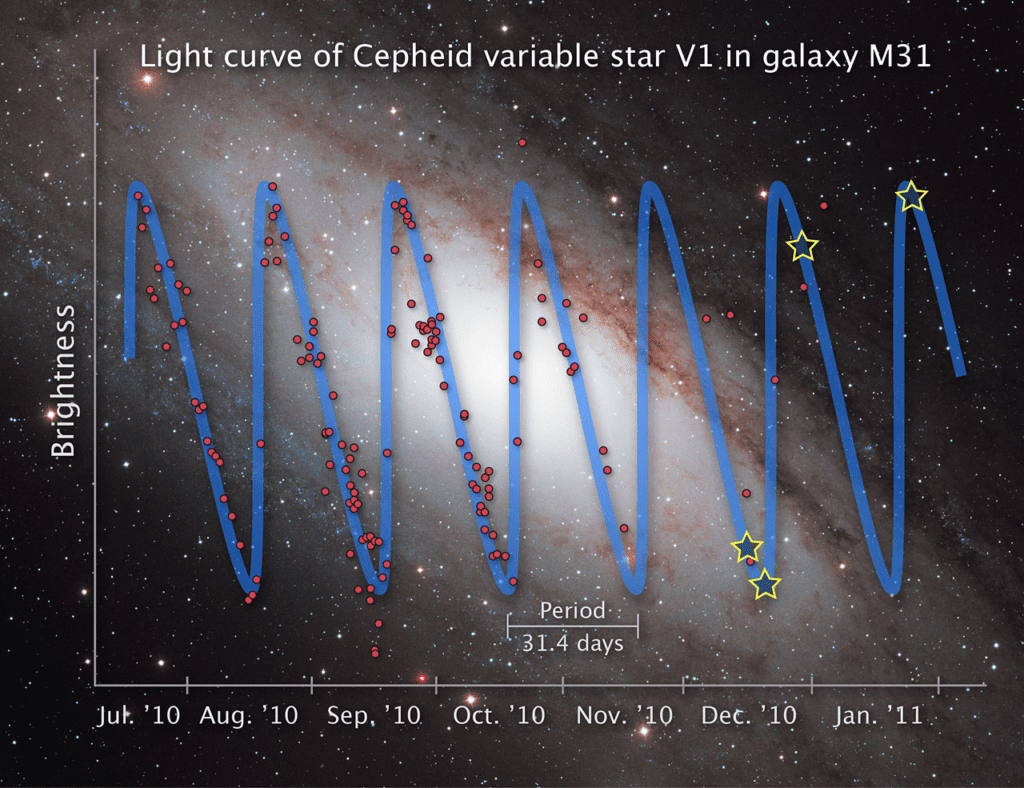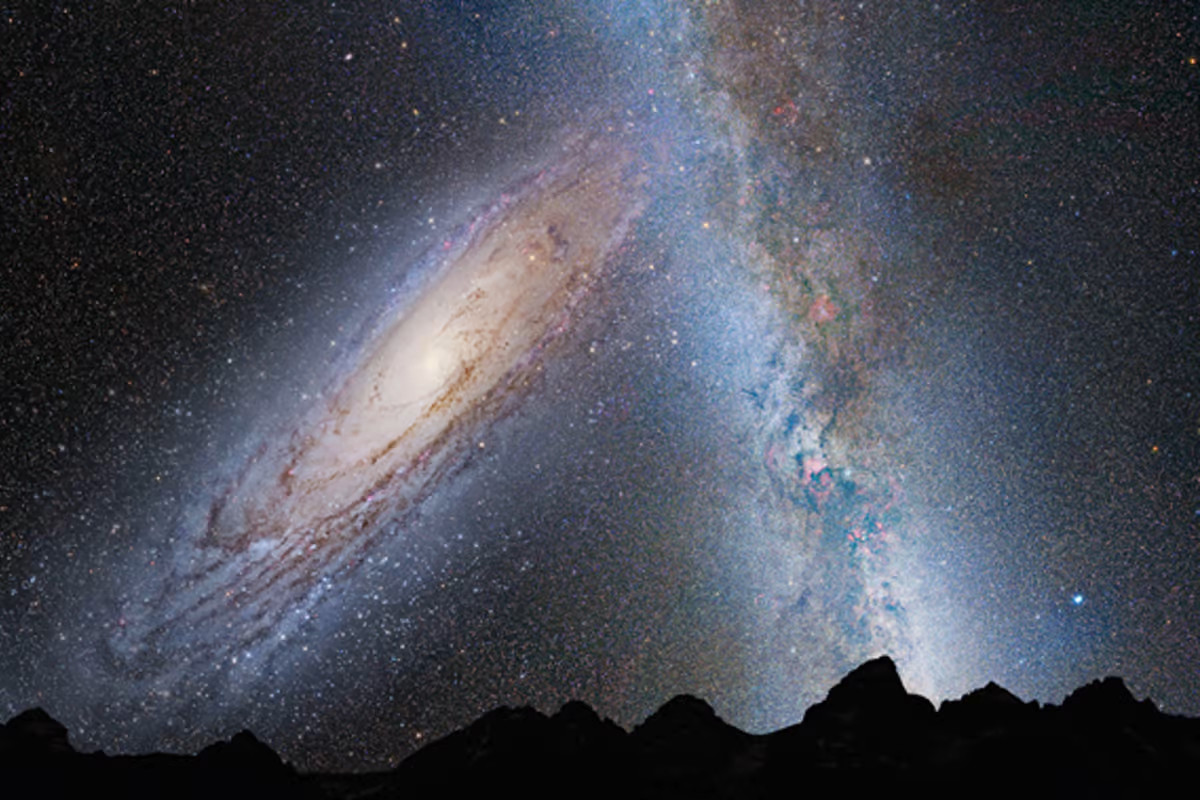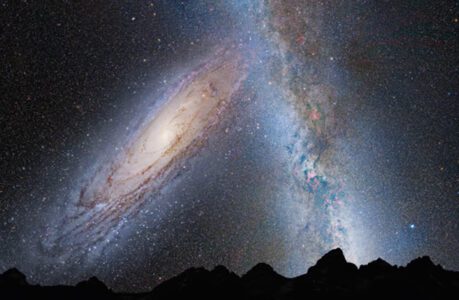Introduction
Exploring the depths of the cosmos has always been an enticing endeavor for humanity. Among the myriad celestial objects that capture our imagination, the Andromeda Galaxy stands out as a beacon of fascination. Positioned as the closest spiral galaxy to our own Milky Way, the question often arises: How far away is the Andromeda Galaxy? Delving into this inquiry unveils a journey through astronomical scales, cosmic distances, and the wondrous expanse of our universe.
Understanding Cosmic Distances
Before delving into the specifics of Andromeda’s location, it’s crucial to grasp the concept of cosmic distances. The vastness of space is incomprehensible to the human mind, with distances measured in light-years, the distance light travels in a year at the speed of about 300,000 kilometers per second. To put this into perspective, our closest celestial neighbor, the Moon, is merely 1.28 light-seconds away, while the nearest star beyond our solar system, Proxima Centauri, sits at around 4.24 light-years.
The Scale of Andromeda
Measuring the size of the Andromeda Galaxy requires navigating astronomical scales that defy human comprehension. At its broadest point, Andromeda spans approximately 220,000 light-years, making it significantly larger than our own Milky Way, which has a diameter of about 100,000–120,000 light-years.

Exploring Andromeda’s Extent
To visualize the vastness of the Andromeda Galaxy, consider that if you were to travel at the speed of light, it would take over 200,000 years to traverse its diameter. Within this immense expanse, Andromeda hosts billions of stars, star clusters, nebulae, and other stellar phenomena, each contributing to its rich tapestry of cosmic wonders.
Locating the Andromeda Galaxy
When gazing up at the night sky, the Andromeda Galaxy, also known as Messier 31 or M31, can be spotted with the naked eye under ideal viewing conditions. Positioned in the constellation of Andromeda, this majestic spiral galaxy is approximately 2.537 million light-years away from Earth. However, this figure is not static due to the ongoing expansion of the universe.
Measuring Cosmic Expansion
The expansion of the universe, a concept first proposed by Belgian astronomer Georges Lemaître and later supported by the observations of Edwin Hubble, has significant implications for measuring cosmic distances. The metric expansion of space causes galaxies to recede from each other over time, leading to an apparent redshift in their spectral lines. This redshift is directly proportional to a galaxy’s distance, allowing astronomers to gauge the vast distances between celestial objects.
Using Redshift to Measure Distance
In the case of the Andromeda Galaxy, astronomers employ various methods to determine its distance, with redshift playing a pivotal role. By analyzing the spectrum of light emitted by Andromeda, scientists can identify the redshift caused by the galaxy’s motion away from Earth. This redshift, when compared to the spectral lines of known elements, provides a precise measurement of Andromeda’s distance.
Historical Milestones in Measuring Andromeda’s Distance
The quest to determine the distance to the Andromeda Galaxy spans centuries and has witnessed significant milestones in astronomical history. One notable achievement came in the early 20th century when astronomer Edwin Hubble utilized Cepheid variable stars, a type of pulsating star with a well-defined luminosity-period relationship, to measure the distance to Andromeda. Hubble’s groundbreaking work not only confirmed Andromeda as a separate galaxy but also provided a foundational understanding of the universe’s vast scale.

Modern Techniques and Advancements
Since Hubble’s pioneering efforts, astronomers have refined and expanded upon the methods used to measure cosmic distances. The advent of space telescopes like the Hubble Space Telescope (HST) has enabled precise measurements of Andromeda’s distance using advanced imaging and spectroscopic techniques. Additionally, collaborative projects such as the Pan-STARRS and Gaia missions have contributed valuable data to our understanding of the cosmos.
The Great Andromeda-Milky Way Collision
Beyond its sheer distance, the Andromeda Galaxy holds another captivating aspect: its eventual collision with our own Milky Way. Despite the vast gulf of space that separates these two galaxies, their gravitational interaction ensures a cosmic dance that will culminate in a spectacular merger billions of years from now.
Predicting the Collision
Astronomical simulations based on current observations indicate that the Andromeda-Milky Way collision is inevitable. Rough estimates suggest that the two galaxies will collide in approximately 4 billion years, although the exact timing and outcome remain subject to further study. This collision will reshape both galaxies, triggering a burst of star formation and transforming their spiral structures.
Implications for the Future of Our Galaxy
While the collision with Andromeda may seem distant in cosmic terms, it raises intriguing questions about the fate of our own galaxy. The merger will likely have profound consequences for the distribution of stars, gas, and dark matter within the newly formed galaxy, offering a glimpse into the dynamic evolution of cosmic structures.
How Far is the Andromeda Galaxy.
The journey to understand the distance to the Andromeda Galaxy is not merely a scientific pursuit but a voyage of cosmic exploration that spans centuries of human curiosity and ingenuity. From the pioneering work of astronomers like Edwin Hubble to the cutting-edge technologies of modern telescopes, each step brings us closer to unraveling the mysteries of our universe. As we gaze upon the distant glow of Andromeda, we are reminded of the boundless wonders that await us in the cosmic expanse.
Suggested Websites for Further Reading:

